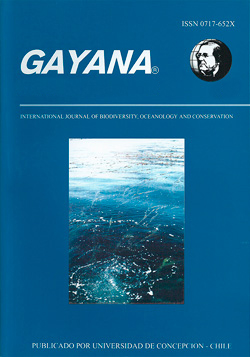Mucus phosphoproteins as an indirect measure of endocrine disruption in native small-bodied freshwater fish, exposed to wastewater treatment plant and pulp and paper mill effluents
Keywords:
endocrine disruption, fish, mucus, phosphoproteins, vitellogeninAbstract
Environmental monitoring programs commonly use fish to study the health of aquatic ecosystems. Nevertheless, lethal sampling techniques are often employed, resulting in ethical considerations. This issue is magnified in Chilean rivers, which contain various endemic fish with conservational concern, according to the International Union for Conservation of Nature Red List of Threatened Species™. Therefore, the aim of this study was to determine if mucosal vitellogenin levels in a native Chilean fish could be used to accurately assess the endocrine disruption potentials of wastewater treatment plant and pulp and paper mill effluents (WWTPEs and PPMEs, respectively). For this, Carmelita de Concepción (Percilia irwini) specimens were exposed WWTPEs and PPEs for 12 days, and mucosal vitellogenin-like phosphoprotein concentrations were determined with a colorimetric assay. Increased VTG-like phosphoproteins and hepatic ethoxyresorufin-o-deethylase induction levels (widely used as biomarker for exposure) were detected in effluent-exposed individuals. This study supports the endocrine disruption potentials of WWTPEs and PPEs in P. irwini. Notably, this is the first study to use non- lethal biomarkers to determine the effects of industrial effluents in a native Chilean freshwater species, thus presenting an alternative vitellogenin-like protein detection method. Nevertheless, additional population and toxicity studies of fish native to Chilean rivers are needed. Further investigation is also required on xeno-oestrogen compounds and on methods for mitigating potential effects on biodiversity.




